

As a longtime Paul Simon fan, I’m thrilled he’s hitting the road again after his farewell tour in 2018. Recently, I’ve been listening to his songs on heavy rotation, and inspiration struck while singing “50 Ways to Leave Your Lover.” Sure, you don’t have to “slip out the back, Jack” or “hop on the bus, Gus”. But it may be time to try something new if you find yourself overworked, overwhelmed, or stuck in a productivity rut.
In particular, when you work smarter, you focus on what matters, use your time efficiently, and get results without burning out. Whether you’re a freelancer, manager, entrepreneur, or office warrior, these 50 strategies will help you work more clearly, reduce stress, and even find a little more groove.
Mindset Shifts
1. Prioritize outcomes over hours.
Rather than logging hours, focus on delivering measurable results. As a result, time and resources are effectively allocated to meet organizational goals, which encourages efficiency, accountability, and a results-driven mindset.
2. Ditch the perfectionism.
Remember, done is better than perfect. Of course, this is easier said than done.
Setting clear deadlines will help you avoid overanalyzing and overworking. Additionally, break large projects into smaller, manageable tasks to avoid overwhelm and promote steady progress. Also, practice self-compassion by accepting mistakes as part of the learning process.
3. Embrace a growth mindset.
The first step toward cultivating a growth mindset is to view challenges as opportunities for learning. Invite feedback from peers and mentors to improve your skills and gain new perspectives. Moreover, celebrate small victories and progress to reinforce that effort and perseverance lead to success.
4. Start with why.
Knowing the underlying purpose of your actions can help you determine which choices align with your long-term goals. As a result of this clarity, you can prioritize tasks and make decisions that contribute meaningfully to your objectives instead of wasting time on less important tasks. Decision-making becomes more intentional and strategic, leading to more effective and satisfying results.
5. Say no more often.
When you say yes to something unimportant, you say no to something essential. Say no tactfully, and express gratitude for the opportunity or request before declining. Communicate your current priorities and constraints preventing you from performing new duties. Also, offer alternatives or suggest someone better suited for the job, demonstrating your willingness to help while maintaining boundaries.
Daily Habits That Matter
6. Plan your day the night before.
Don’t let decision fatigue hold you back—get started right away. How? Consider creating a to-do list with prioritized tasks to keep you focused on the most important tasks. For effective time management, you can set specific times for each task. This approach can streamline your morning routine and boost your productivity.
7. Tackle your most challenging task first.
In the morning, eat your “frog” — thanks, Brian Tracy. In other words, the most challenging task should be completed at the start of your day to harness your peak energy and focus. Doing so can reduce stress and create a sense of accomplishment early in the day, setting the tone for the rest of the day. It also releases mental space, enabling you to tackle subsequent tasks more confidently and easily.
8. Use a shutdown routine.
You should end your day intentionally to reduce mental clutter. For example, you might want to take 15 minutes at the end of the day to reflect and plan for the day ahead. You should also turn off notifications and organize your workspace for the following morning to minimize distractions. Lastly, take a moment to reflect on your day, express gratitude, and mentally transition from work to personal time.
9. Take regular breaks.
Your brain needs breaks to stay sharp. Therefore, include physical, mental, and social breaks in your routine. If you need a physical break, you might like to take a walk or stretch. Meditation or listening to music can be effective mental breaks, while chatting with a coworker or calling a friend can be effective social breaks.
10. Hydrate.
Proper hydration is essential for maintaining optimal cognitive function and energy levels throughout the day. Staying well hydrated improves concentration, memory, and mood, which are essential for staying focused and productive. Moreover, drinking enough water can prevent fatigue and headaches, ensuring you remain alert and ready to tackle your tasks.
Time Management Tips
11. Use time blocks.
Whenever possible, group similar tasks together and schedule their own time blocks. This approach reduces distractions and increases focus by allowing you to focus on one task at a time. Additionally, it reduces decision fatigue since you don’t have to decide what to work on next constantly. With time, you’ll be able to improve your productivity and use your time more efficiently.
12. Track your time for a week.
You can’t improve what you don’t measure. First, use a time tracking tool or app to keep track of your daily activities. Track each task you perform and the time you spend doing it to spot patterns and areas where you may be wasting time. After reviewing your weekly log, make adjustments to optimize your schedule and identify opportunities for improvement.
13. Set deadlines — even if they’re fake.
In addition to motivating you to complete tasks more efficiently, deadlines give you a sense of urgency. Moreover, they help prioritize tasks, ensuring that important tasks are handled promptly. Additionally, deadlines encourage you to stay committed and meet your goals within a specified period, enhancing accountability.
14. Limit your to-do list to 3–5 key items.
If you limit your to-do list to a few key items, you won’t feel overwhelmed by an endless list of tasks. With this approach, you can concentrate on activities with the greatest impact, ultimately leading to greater progress and accomplishment. Additionally, a shorter list increases overall efficiency and reduces the stress associated with multitasking.
15. Use a digital or paper planner that actually works for you.
When choosing a planner, ensure it suits your personal preferences and organizational style. After all, a planner aligning with your unique needs will be more engaging and likely to stick with you over time. Through personalization, the planner becomes more than just a tool but a companion in managing your time effectively.
Email & Communication Hacks
16. Set email checking times.
Regularly checking your email can reduce distractions and improve focus, allowing you to devote uninterrupted time to important tasks. By preventing the feeling of being constantly overwhelmed by incoming messages, this practice can also help manage stress. Additionally, it will make handling emails more efficient, as you’ll deal with them in batches instead of individually.
17. Use canned responses.
With canned responses, you can quickly reply to common inquiries without having to draft a new response each time. They ensure consistent messaging, which is particularly important for maintaining a professional tone throughout communications. Furthermore, you can focus more on other tasks by streamlining your email process.
18. Turn off unnecessary notifications.
The enemy of deep work is distraction. Thankfully, you can identify unnecessary notifications by determining which alerts are truly essential for your daily tasks. Consider whether each notification is relevant to your priorities or merely interrupts your work. Overall, disabling non-critical alerts will help you maintain focus and improve productivity.
19. Get to the point in messages.
Do you want to respect others’ and your own time? Clear and concise messaging allows you to communicate your key points more effectively. As a result, misunderstandings and lengthy back-and-forth exchanges are reduced. Both you and your recipients can save valuable time by getting to the point quickly.
20. Use “Do Not Disturb” mode liberally.
You aren’t obligated to give anyone 24/7 access. So, to ensure uninterrupted focus, configure “Do Not Disturb” mode to be active at specific times of the day. Establish clear expectations for response times outside of these hours and communicate them to your team. You can customize your settings to accept priority notifications from key contacts or urgent matters so you won’t miss crucial updates.
Task & Project Management
21. Use the Eisenhower Matrix.
According to the Eisenhower Matrix, tasks can be classified into four categories: urgent and important, important but not urgent, urgent but not important, and neither urgent nor essential. As a result of categorizing tasks in this way, you can focus on what matters, delegate or schedule less critical tasks, and eliminate time-wasting activities. Using this method will make you more productive and ensure that the tasks you are working on align with your goals.
22. Break big projects into micro-tasks.
Effective micro-tasks can be created by breaking down a large project into its core components. However, the key is to determine specific, actionable steps that can be completed in a short period of time, ensuring that each is clear and manageable. By taking this approach, you not only make the project seem less overwhelming, but you also track your progress and boost your motivation as you complete each task.
23. Delegate more.
Whenever possible, let someone else handle a task instead of you. You could, for example, delegate tasks that are time-consuming or out of your primary area of expertise. Additionally, delegating responsibilities allows team members to gain new skills and experiences and grow as a team. Lastly, choose tasks that do not require your input or decision-making, allowing you to devote your time to more strategic activities.
24. Batch recurring tasks.
Group similar tasks together and crush them all in one go. Emails, billing, and scheduling meetings are routine administrative tasks suitable for batching. Moreover, writing blog posts or updating social media can be batched to maximize creative flow. As a result, you minimize context switching and increase your efficiency.
25. Keep a master task list.
Put your thoughts on paper (or the screen). As new tasks arise, review your master task list and add them as needed, ensuring nothing gets missed. You should prioritize items according to their urgency and importance to know what needs attention first. In addition, mark off completed tasks to keep track of your progress.
Focus Boosters
26. Work in sprints.
With a 90-minute deep work session, you lose yourself completely in a task without distractions, allowing yourself to experience flow. This extended period of focus increases your ability to solve complex problems and produce high-quality work. Dedicating uninterrupted time to deep work maximizes your brain resources and boosts your productivity significantly.
27. Use noise-canceling headphones or focus music.
Using focus music, or silence, can help drown out ambient noise and enhance concentration by creating a consistent auditory environment. It can also help you stay calm and focused by reducing stress and anxiety. Certain types of focus music also improve cognitive function and aid memory.
28. Clean your workspace.
When a space is tidy, distractions are reduced. As such, spend a few minutes decluttering and organizing your workspace at the end of every day. Use trays, folders, and drawers to keep items neatly organized and easily accessible. Also, to prevent unnecessary accumulation of office supplies, follow the “one in, one out” rule.
29. Single-task, don’t multitask.
In the words of Gary Keller, “You can do two things at once, but you can’t focus effectively on two things at once.” Therefore, to cut back on multitasking, identify the most critical task and concentrate solely on that until it has been completed. To ensure you give each task your full attention, set timers or apps to allocate dedicated blocks of time. You can also train to avoid switching tasks by turning off notifications and setting boundaries with colleagues during your focus periods.
30. Try “temptation bundling.”
In addition to increasing productivity, temptation bundling makes less desirable tasks more enjoyable. Adding something you love to your task, such as listening to your favorite podcast, creates a positive association and energizes you to finish both. By taking this approach, you will overcome procrastination and make chores less burdensome, leading to more consistent and efficient work habits.
Smarter Meetings
31. Decline meetings that don’t have a clear agenda.
Don’t bother with a meeting if it isn’t purposeful. Specifically, think about whether the meeting will provide valuable information or help you achieve specific goals. If your presence in the meeting is essential for decision-making, or if you could summarize it in an email, decide if you are required to attend. Also, participate in meetings where your input is required or critical updates will be shared.
32. Keep meetings short.
Keeping meetings short keeps participants focused and engaged throughout the discussion. They also minimize time away from other important tasks, increasing productivity. Shorter meetings facilitate concise communication and more efficient decision-making.
According to studies, the average person’s attention span begins to wane after 10-15 minutes of concentrated activity and drops significantly after 30 minutes. For this reason, productivity experts recommend keeping most meetings within 15-30 minutes whenever possible.
33. Send a summary instead of holding a meeting.
As a result of asynchronous communication, team members can review information at their own pace and convenience, which leads to better comprehension and retention. In addition, it reduces the likelihood of scheduling conflicts and allows everyone to make thoughtful contributions without the pressure of real-time interaction. With the help of tools like email and collaborative platforms, teams can streamline communication, leading to greater productivity and flexibility.
34. Use stand-up meetings for quick check-ins.
In agile environments, stand-up meetings are critical for aligning and informing teams. Often held daily, these brief meetings allow team members to discuss updates, address obstacles, and plan next steps. As a result of regular communication, stand-up meetings keep projects on track and team members agile enough to adapt as priorities change.
35. End every meeting with next steps and owners.
After a meeting, assigning clear action items helps foster accountability and prevent tasks from getting lost. It also streamlines project progress, since team members can focus on their tasks immediately with clear expectations and deadlines. In addition, this practice enhances team collaboration, since individuals can see how their contributions contribute to the overall goal.
Technology to the Rescue
36. Automate recurring tasks.
Automation allows repetitive tasks to be completed much faster and with less effort. Individuals and teams can become more efficient and innovative by focusing on strategic and creative work. Furthermore, automation minimizes the risk of human error, resulting in more accurate and consistent results.
37. Use a password manager.
With password managers, you can store and encrypt all your passwords, allowing you to log in easily without remembering multiple passwords. Additionally, they generate strong, unique passwords for each account, enhancing security. By remembering just one master password, users can simplify their online experience and reduce the risk of getting locked out.
38. Declutter your desktop.
As mentioned above, regular decluttering can significantly boost productivity by maintaining a clear and organized workspace. Individuals can focus more effectively on their tasks by removing unnecessary items and files. Furthermore, an organized environment reduces stress and makes it easier to locate important documents.
39. Unsubscribe ruthlessly.
Unsubscribing from unnecessary emails will significantly reduce distractions in your inboxes. As a result, you can focus on important messages and respond more quickly. Additionally, managing email subscriptions with tools like Unroll.me or SaneBox reduces stress and improves productivity by decluttering digital space.
40. Use calendar booking tools.
By allowing others to view your availability and book meetings at convenient times, calendar apps, like Calendar, simplify the scheduling process. As a result, everyone involved doesn’t have to deal with lengthy email exchanges to coordinate schedules. With these tools, you can manage appointments efficiently and reduce scheduling conflicts, thus improving overall time management and the efficiency of your daily tasks.
Enrgy & Wellness
41. Sleep like it’s your job.
As a result of a good night’s sleep, memory consolidation, problem-solving skills, and creativity are enhanced. Conversely, lack of sleep impairs attention, decision-making, and reaction times. Overall, when you prioritize sleep, your brain will function at its best.
42. Move your body daily.
Regular physical activity can improve cardiovascular health, strength, and mental well-being and boost clarity. It also enhances mood and energy by reducing stress and anxiety. Moreover, regular exercise can improve sleep quality, allowing you to fall asleep more quickly and stay asleep longer.
43. Eat for focus.
A healthy diet rich in nutrients is important for brain function and mental clarity. A diet high in omega-3 fatty acids, antioxidants, and vitamins can improve cognitive performance and protect the brain from oxidative damage. Eating whole grains, fruits, and vegetables can prevent the mental fatigue associated with sugar crashes.
44. Create tech-free zones — especially before bed.
Tech-free zones can significantly improve focus and concentration by minimizing distractions from devices. When you’re not distracted by notifications or screen time, you can focus more on tasks and become more present. Furthermore, this practice encourages mindfulness, allowing the brain to rest and recharge, enhancing mental clarity and productivity.
45. Practice mindfulness.
By practicing mindfulness practices such as meditation and deep breathing, stress levels can be reduced, resulting in a feeling of calm and relaxation. Regular mindfulness practice enhances self-awareness and emotional regulation, which leads to improved decision-making and interpersonal relationships. Moreover, mindfulness can help you stay focused and productive throughout the day by improving your attention span and concentration.
Long-Term Thinking
46. Reflect weekly.
A weekly reflection will allow you to evaluate your progress and identify areas for improvement. This allows continuous professional and personal growth by celebrating successes and learning from setbacks. As you evaluate your actions and strategies, you can make informed adjustments to align with your long-term goals.
47. Keep learning.
Lifelong learning allows us to stay curious and adaptable, nurturing a sense of curiosity and commitment. In an ever-evolving job market, individuals can stay competitive by continuously learning new skills and knowledge. Moreover, lifelong learning can enhance personal and professional development by providing new opportunities and experiences.
48. Build systems, not just habits.
Habits provide the foundation for establishing routines, but systems provide a structure supporting long-term success. Systems ensure continuous progress, even when motivation wanes, as they accommodate changes and challenges. On the other hand, habits require repetition and consistency, but systems can accommodate changes and challenges. Individuals need to create effective systems to increase sustainability and adapt to new circumstances.
49. Create a “not-to-do” list.
A “not-to-do” list will help you identify and eliminate unproductive activities. After all, the more carefully you define what you should avoid, the easier it will be to stay on top of your priorities and avoid distractions. Using this approach improves your efficiency, so you can devote more time to tasks that matter.
50. Invest in relationships.
Working together can result in innovative solutions and better outcomes, as we can share diverse perspectives and ideas. Additionally, collaborative efforts distribute workload, making managing complex tasks and meeting deadlines easier. Furthermore, collaborative relationships foster a supportive environment where team members motivate and encourage one another, enhancing productivity.
Final Thoughts
Obviously, this isn’t what Paul Simon was going for. Nevertheless, there are over 50 ways to work wiser, reduce stress, and improve flow.
The ability to work smarter is a mindset, a habit, and a skill. Like any good song, mastering the rhythm takes some practice.
Will you try any of these strategies this week? Start with one or two. After all, smarter work isn’t about overhauling your entire life overnight. All you need to do is make consistent, thoughtful improvements to make everything you do more effective and sustainable.
FAQs
What does “working smarter, not harder” actually mean?
The goal is to accomplish tasks efficiently, effectively, and strategically with as little effort, time, and wasted energy as possible. The key is optimizing your methods instead of just working harder.
Who can benefit from learning to work smarter?
Everyone!
If you are a student, a professional, a freelancer, a stay-at-home parent, or anyone else with tasks to complete, adopting smarter work habits can increase productivity, reduce stress, and free up time.
Why is working smarter important in today’s world?
Our fast-paced and sometimes overwhelming environment can lead to burnout and diminishing returns by simply working harder. By working smarter, we can navigate complexity, prioritize effectively, and achieve more sustainable success.
Is there a one-size-fits-all approach to working smarter?
Short answer? No.
The specific strategies will vary depending on the task, the industry, and the individual’s role. However, they are generally applicable to the underlying principles.
What if I try these strategies and they don’t seem to work for me?
You should experiment with different methods and tools until you find what best fits your personality, work style, and tasks. It is also important to be patient and willing to adapt. The process of learning and refining how to work smarter is ongoing.
Image Credit: Andrea Piacquadi; Pexels
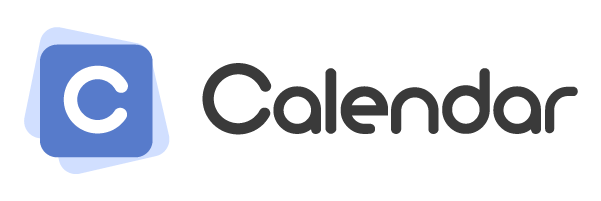
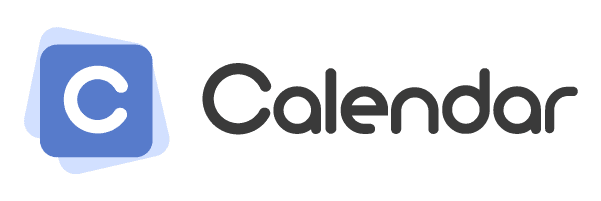
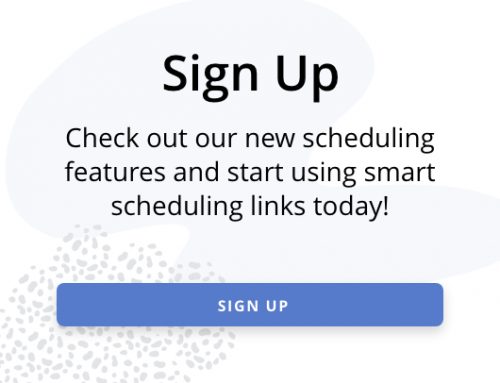



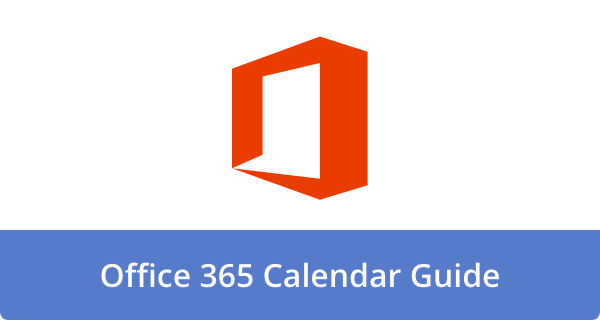
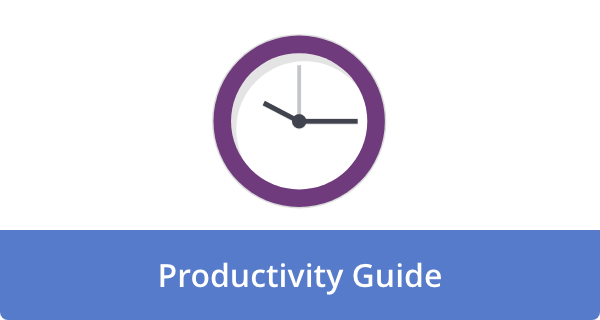

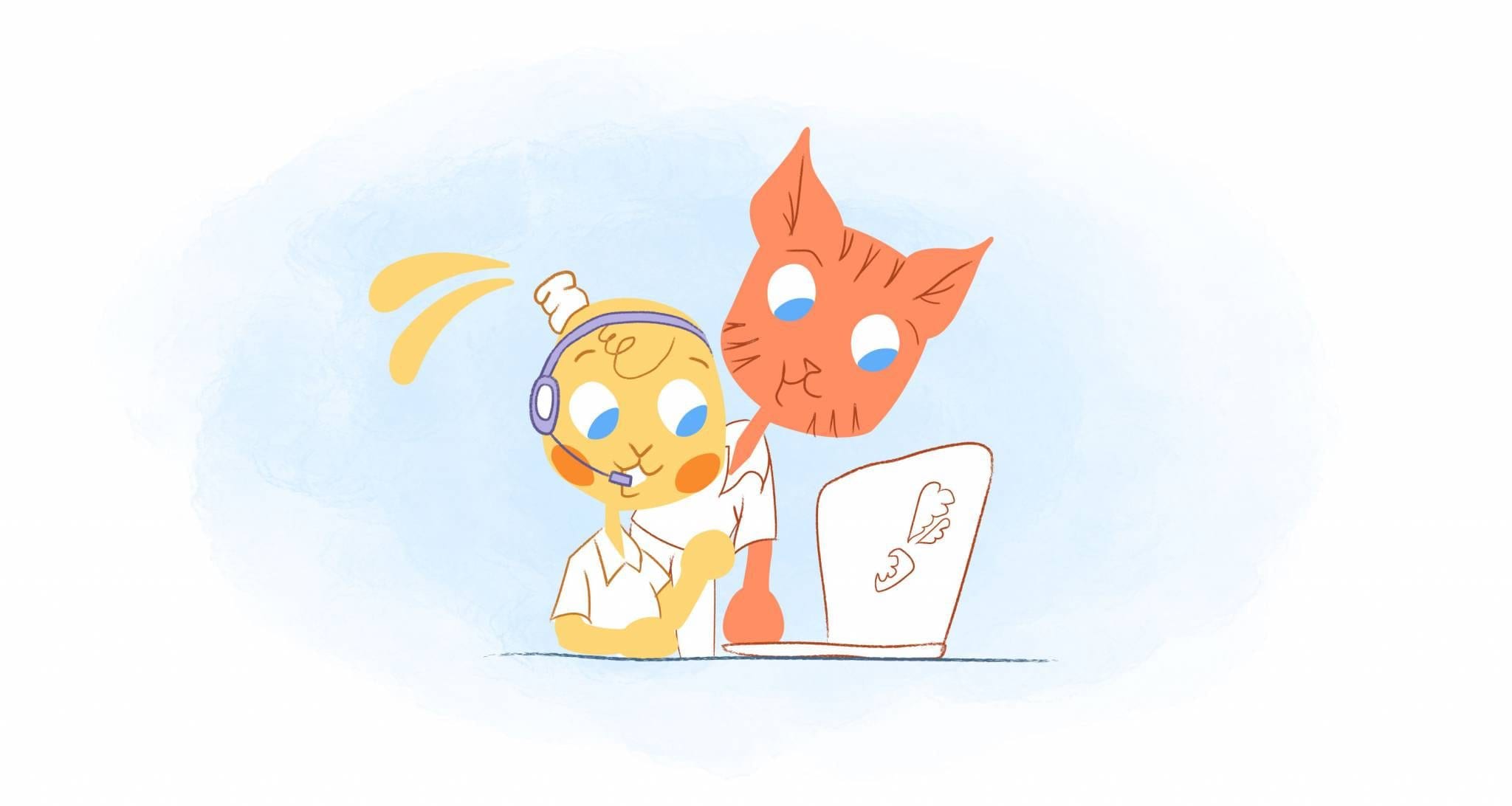

John Rampton
John’s goal in life is to make people’s lives much more productive. Upping productivity allows us to spend more time doing the things we enjoy most. John was recently recognized by Entrepreneur Magazine as being one of the top marketers in the World. John is co-founder and CEO of Calendar.